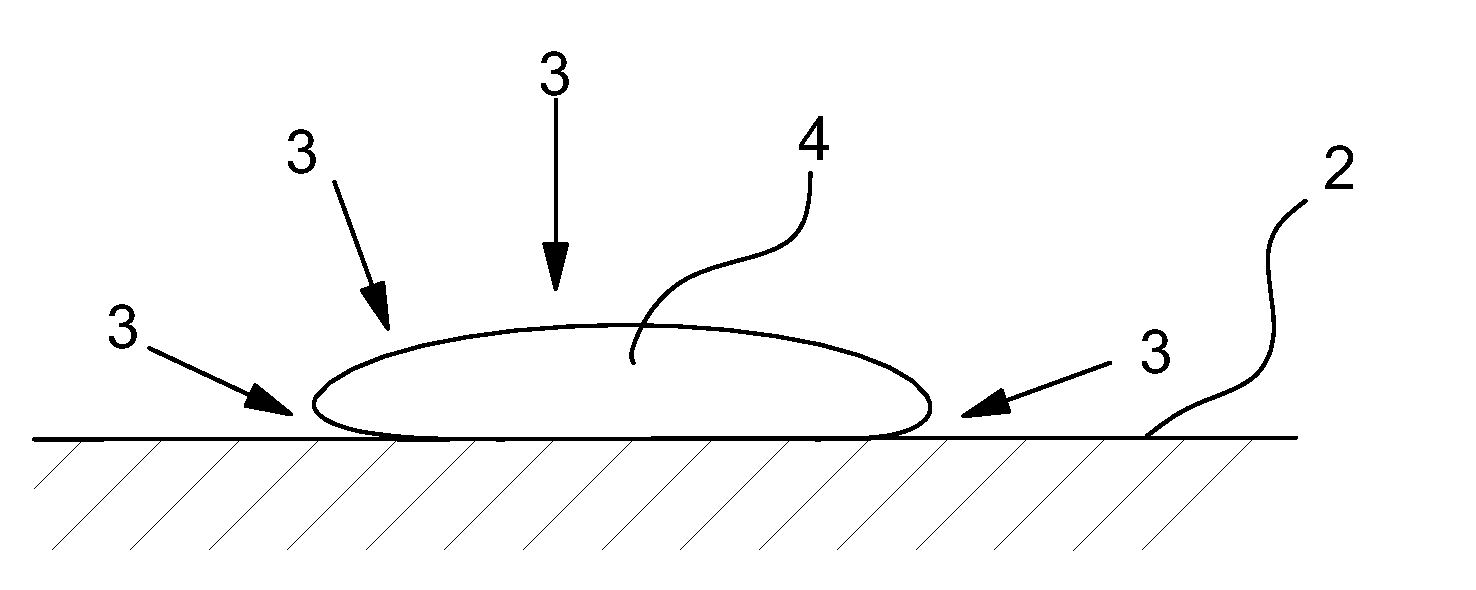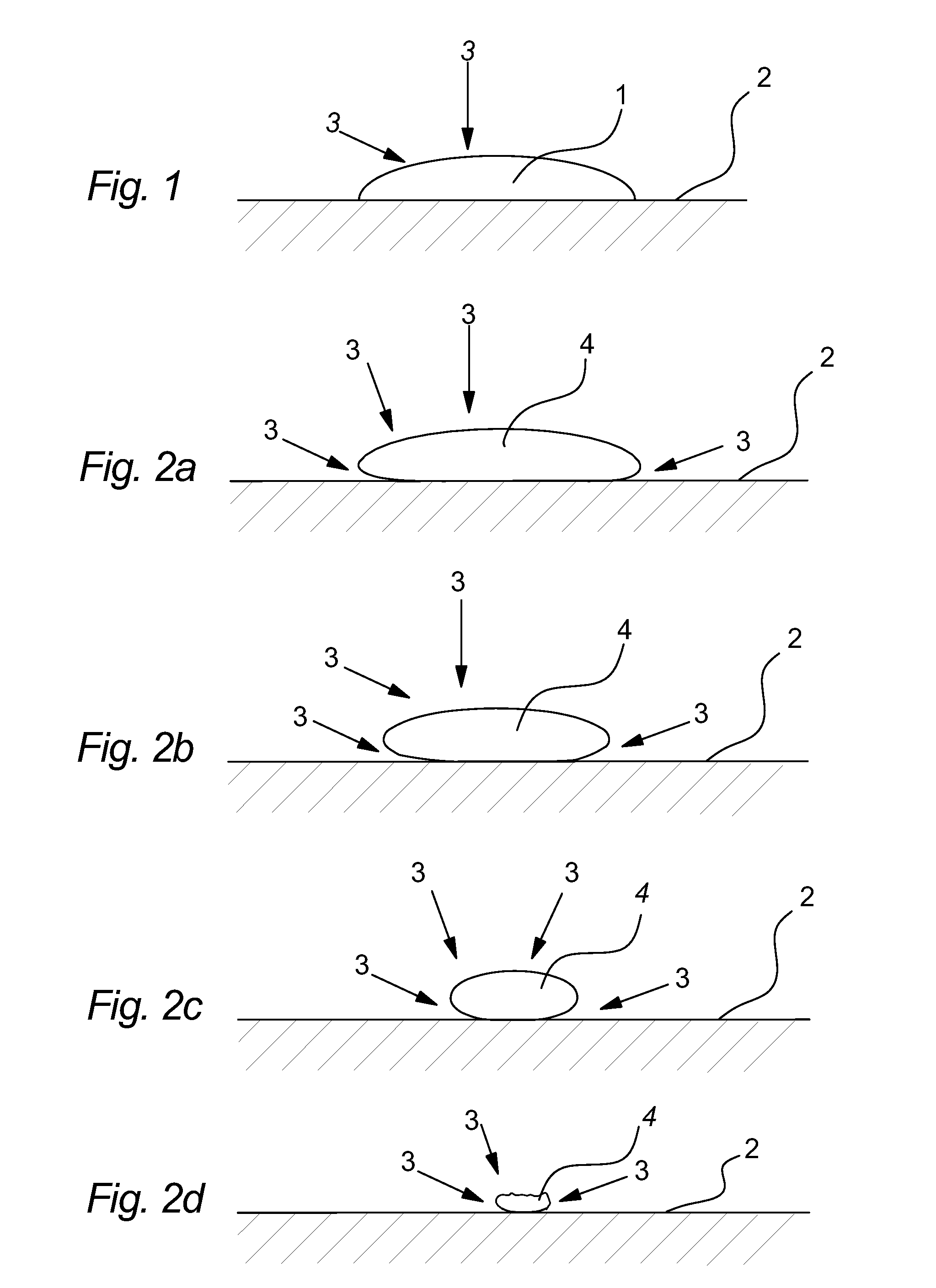Environmental Chewing Gum
a gum and composition technology, applied in the field of chewing gum composition, can solve the problems of delayed biodegradation, intended biodegradation, and chewing gum comprising biodegradable polymers, and achieve the effects of reducing the polarity of the gum base polymer
- Summary
- Abstract
- Description
- Claims
- Application Information
AI Technical Summary
Benefits of technology
Problems solved by technology
Method used
Image
Examples
example 1
Preparation of Biodegradable Resinous Polymer with Molar ratio of 97% D,L-lactide and ε-caprolactone initiated with 1,2-propane diol
[0251]To a dry 100 ml glass round-bottom flask was charged 0.265 g Tin(II)-ethylhexanoate (Aldrich 97%), 6.427 g 1,2-propanediol (Aldrich 99+%), and 18.627 g c-caprolactone (ACROS 99+%) in a dry, nitrogen purged glove-box. The reactor was immersed into a 130° C. preheated silicone oil bath and mechanically stirred for 65 minutes and removed from the oil bath. The polymer was drawn into a dry syringe while still hot and 22.172 g was charged into a dry 1000 ml round-bottom flask containing 678.062 g D,L-lactide (ORTEC). The flask was immersed into the 130° C. preheated silicone oil bath and mechanically stirred for 300 minutes when removed. The flask was immediately removed from the glove-box and completely wrapped with a pre-heated Glas-Col 500 watts / 115 volts heating mantle regulated with a Staco Energy Products Type 3 Variable Autotransformer set at 65...
example 2
Elastomeric Polymer
[0253]A standard polyisoprene polymer manufactured in a conventional process is provided as an elastomeric polymer.
example 3
Biodegradable Elastomeric Polymer
[0254]An elastomer sample is produced using a 500 mL resin kettle equipped with an overhead stirrer, nitrogen gas inlet tube, thermometer, and distillation head for removal of methanol. To the kettle are charged 83.50 g (0.43 mole) dimethyl terephthalate, 99.29 g (0.57 mole) dimethyl adipate, 106.60 g (1.005 mole) di(ethylene glycol) and 0.6 g calcium acetate monohydrate. Under nitrogen, the mixture is slowly heated with stirring until all components become molten (120-140° C.). Heating and stirring are continued and methanol is continuously distilled. The temperature slowly rises in the range 150-200° C. until the evolution of methanol ceases. Heating is discontinued and the content is allowed to cool to about 100° C. The reactor lid is removed and the molten polymer is carefully poured into a receiving vessel.
[0255]Characterization of the polymer indicates Tg=−30° C. (DSC, heating rate 10° C. / min), Mn=40,000 g / mol and Mw=190,000 g / mol (gel permeati...
PUM
 Login to View More
Login to View More Abstract
Description
Claims
Application Information
 Login to View More
Login to View More - R&D
- Intellectual Property
- Life Sciences
- Materials
- Tech Scout
- Unparalleled Data Quality
- Higher Quality Content
- 60% Fewer Hallucinations
Browse by: Latest US Patents, China's latest patents, Technical Efficacy Thesaurus, Application Domain, Technology Topic, Popular Technical Reports.
© 2025 PatSnap. All rights reserved.Legal|Privacy policy|Modern Slavery Act Transparency Statement|Sitemap|About US| Contact US: help@patsnap.com


